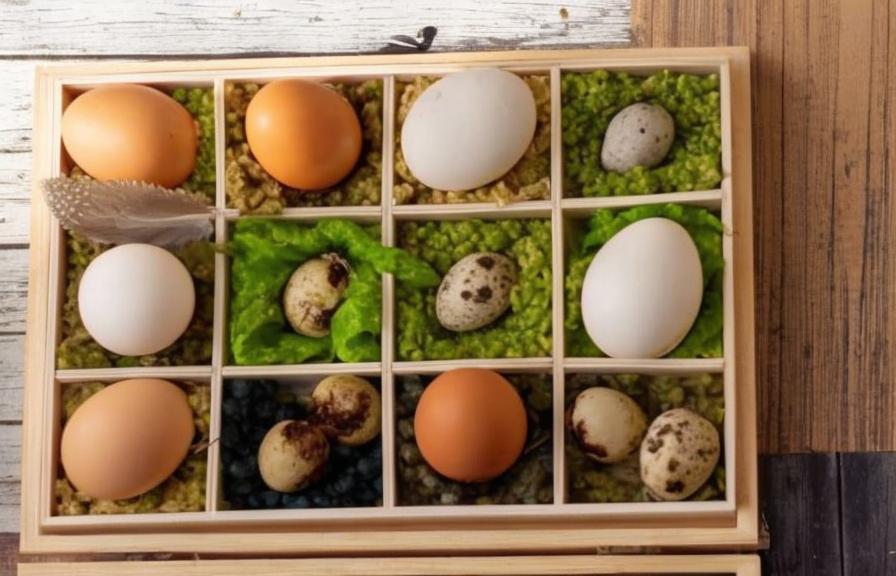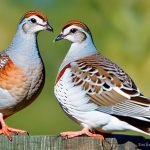Quail are highly social birds that thrive in group settings. They are known for their strong social bonds and complex communication behaviors. In the wild, quail live in flocks and rely on each other for protection, foraging, and reproduction. This social nature is important to consider when keeping quail in captivity, as they require social interaction and companionship to thrive.
Quail communicate with each other through a variety of vocalizations, body language, and behaviors. They use these communication methods to establish and maintain social hierarchies within the flock, as well as to coordinate foraging and mating activities. Understanding the social dynamics of quail is essential for creating a harmonious and healthy flock environment. It is important to provide them with the opportunity to engage in natural social behaviors, such as dust bathing, foraging, and roosting together. By understanding and respecting the social nature of quail, you can create a more enriching and fulfilling environment for your birds.
Key Takeaways
- Quail are social birds that thrive in groups and exhibit complex social behaviors.
- Factors to consider when keeping quail together include their species, gender, and age.
- Ideal group sizes for different quail species vary, with some species tolerating larger groups than others.
- Managing quail aggression and pecking order is important to maintain a harmonious flock dynamic.
- Providing adequate space and resources, such as food, water, and shelter, is crucial for the well-being of quail flocks.
- Regular monitoring of the health and well-being of quail flocks is essential for early detection of any issues.
- When introducing new quail to an existing flock, it is important to do so gradually and monitor for any signs of aggression or stress.
Factors to Consider When Keeping Quail Together
When keeping quail together, there are several important factors to consider to ensure the well-being of the birds and the harmony of the flock. One of the most important factors is the sex ratio within the group. It is generally recommended to keep a higher number of females to males in a quail flock to prevent excessive mating behavior and aggression among males. Additionally, providing adequate space and resources is crucial for maintaining a peaceful coexistence within the flock. Overcrowding can lead to increased aggression, stress, and competition for food and water.
Another important factor to consider is the compatibility of different quail species within the same flock. While some species of quail can coexist peacefully, others may exhibit aggressive behavior towards each other. It is important to research the specific social dynamics of each quail species before attempting to keep them together. Additionally, providing hiding spots and areas for retreat within the enclosure can help reduce stress and aggression within the flock. By carefully considering these factors, you can create a harmonious and balanced environment for your quail flock.
Ideal Group Sizes for Different Quail Species
The ideal group size for quail can vary depending on the species and the size of the enclosure. In general, it is recommended to keep a minimum of three to four quail together, as they are highly social birds that thrive in group settings. However, the ideal group size can vary depending on the specific needs and behaviors of each quail species. For example, some species of quail may be more territorial and require larger territories or smaller group sizes to thrive.
When considering group sizes for different quail species, it is important to research the natural behaviors and social dynamics of each species. Some species may be more tolerant of larger group sizes, while others may require smaller groups to reduce competition and aggression. Additionally, providing ample space and resources within the enclosure is crucial for accommodating larger group sizes. By understanding the ideal group sizes for different quail species, you can create a more suitable and enriching environment for your birds.
Managing Quail Aggression and Pecking Order
Quail are known for their hierarchical social structure, which is often established through aggressive behaviors and dominance displays. It is important to understand and manage these natural behaviors to prevent excessive aggression and stress within the flock. One way to manage quail aggression is by providing ample space and resources within the enclosure to reduce competition and territorial behavior. Additionally, providing hiding spots and areas for retreat can help lower stress levels and prevent aggressive encounters.
Another important aspect of managing quail aggression is understanding the pecking order within the flock. The pecking order is a natural hierarchy that establishes the social ranking of individual birds within the group. It is important to observe and monitor the interactions between birds to ensure that aggressive behaviors do not escalate to the point of causing harm or stress. Introducing new birds to an existing flock can also disrupt the established pecking order, leading to increased aggression and conflict. By carefully managing quail aggression and pecking order dynamics, you can create a more harmonious and balanced environment for your birds.
Providing Adequate Space and Resources for Quail
Providing adequate space and resources is crucial for maintaining the health and well-being of quail flocks. Overcrowding can lead to increased stress, aggression, and competition for food and water. It is important to provide enough space within the enclosure for quail to engage in natural behaviors such as dust bathing, foraging, and roosting. Additionally, providing multiple feeding and watering stations can help reduce competition and ensure that all birds have access to essential resources.
In addition to space, providing enrichment activities such as perches, hiding spots, and dust bathing areas can help reduce stress and boredom within the flock. These enrichment activities mimic natural behaviors and provide mental stimulation for the birds. It is also important to regularly clean and maintain the enclosure to prevent the buildup of waste and bacteria, which can lead to health issues for the birds. By providing adequate space and resources, you can create a more enriching and fulfilling environment for your quail flock.
Monitoring the Health and Well-being of Quail Flocks

Monitoring the health and well-being of quail flocks is essential for early detection of potential issues and ensuring the overall welfare of the birds. Regular health checks should include observing the birds for any signs of illness or injury, as well as monitoring their behavior and appetite. It is important to be familiar with the normal behaviors and appearance of your quail in order to recognize any deviations from their usual state.
In addition to visual observations, it is important to provide a balanced diet and access to clean water at all times. Proper nutrition is essential for maintaining the health and vitality of quail flocks. Regularly cleaning and maintaining the enclosure is also crucial for preventing the spread of disease and parasites. It is important to promptly address any health concerns or issues that arise within the flock by consulting with a veterinarian or experienced avian specialist. By monitoring the health and well-being of your quail flocks, you can ensure that they are thriving in their environment.
Tips for Introducing New Quail to an Existing Flock
Introducing new quail to an existing flock should be done with care and consideration to minimize stress and aggression among the birds. One tip for introducing new quail is to provide a separate enclosure within the existing space so that the birds can see and interact with each other without direct physical contact. This allows them to become familiar with each other’s presence before being introduced into the same space.
Another tip is to introduce new birds during the evening when they are less active, which can help reduce aggressive behaviors during the initial introduction period. It is also important to closely monitor the interactions between new and existing birds to ensure that no excessive aggression or bullying occurs. Providing ample space, resources, and hiding spots within the enclosure can help reduce competition and stress during the introduction process.
Additionally, it is important to quarantine new birds for a period of time before introducing them to an existing flock to prevent the spread of disease or parasites. This allows you to observe their health and behavior before integrating them into the main flock. By following these tips for introducing new quail to an existing flock, you can help minimize stress and ensure a smooth transition for all birds involved.
In conclusion, understanding the social nature of quail is essential for creating a harmonious environment for these highly social birds. Factors such as sex ratio, compatibility of different species, group sizes, managing aggression, providing adequate space and resources, monitoring health, and introducing new birds all play a crucial role in maintaining a healthy and balanced quail flock. By carefully considering these factors and implementing appropriate management strategies, you can create a fulfilling and enriching environment for your quail flocks.
If you’re considering keeping quail, you may also be interested in learning about the natural hatching process of chicken eggs. Understanding how long it takes for chicken eggs to hatch naturally can provide valuable insights for anyone interested in poultry breeding. Check out this informative article on Poultry Wizard to gain a deeper understanding of this fascinating aspect of poultry farming.
FAQs
How many quail can you keep together?
Quail are social birds and can be kept in groups. The recommended minimum space per quail is 1 square foot in a coop or pen.
What is the ideal quail to space ratio?
The ideal quail to space ratio is 1 square foot per quail. This allows them to have enough space to move around and reduces the likelihood of aggression.
Can you keep different quail species together?
It is not recommended to keep different quail species together as they may exhibit aggressive behavior towards each other. It is best to keep quail of the same species together.
What are the benefits of keeping quail in a group?
Keeping quail in a group allows them to exhibit natural social behaviors, reduces stress, and can improve overall well-being. It also provides them with companionship.
What are the potential issues of keeping too many quail together?
Keeping too many quail together in a confined space can lead to overcrowding, increased aggression, and potential health issues. It is important to provide adequate space for the number of quail being kept.
Meet Walter, the feathered-friend fanatic of Florida! Nestled in the sunshine state, Walter struts through life with his feathered companions, clucking his way to happiness. With a coop that’s fancier than a five-star hotel, he’s the Don Juan of the chicken world. When he’s not teaching his hens to do the cha-cha, you’ll find him in a heated debate with his prized rooster, Sir Clucks-a-Lot. Walter’s poultry passion is no yolk; he’s the sunny-side-up guy you never knew you needed in your flock of friends!







